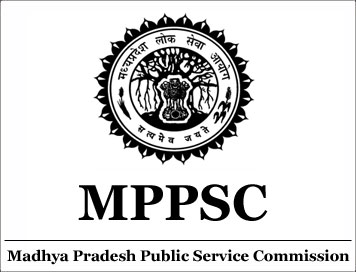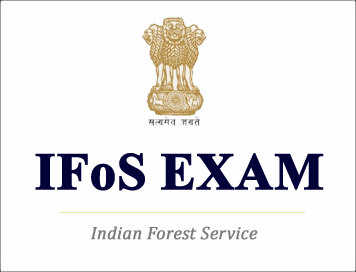
(डाउनलोड) एमपीपीएससी: राज्य सेवा प्रारंभिक परीक्षा पेपर -2 2022
(Download) MPPSC : State Service Preliminary Exam Paper -2 2022
- Paper :- Paper 2 (General Aptitude Test) (हिन्दी)
- Exam Date :- 19/06/2022
- Total Question :- 100
- Exam Paper :- MPPSC PCS Prelims Exam 2022
(Paper 2 – General Aptitude Test)
निर्देश (प्रश्न क्र.1-4): दिये गये विकल्पों में सही उत्तर चुनिये।
1. वायुमंडलीय कारणों से पानी के न होने पर भी उसके दिखने के भ्रम को कहा जाता है
(A) मृगतृष्णा
(B) शादवल
(C) भ्रान्ति
(D) उपर्युक्त में से कोई नहीं
Answer – A
2. जो लोग मात्र अपनी खपत के लिए ही पर्याप्त कृषि करते हैं और बा जार में बिक्री के लिए नहीं, उन्हें कहा जाता है
(A) जीविका कृषक
(B) जनजाति
(C) जैव कृषक
(D) उपर्युक्त में से कोई नहीं
Answer – A
3. कौन-सा शब्द समुदायों के कई पीढ़ियों में जमा पारंपरिक ज्ञान का सबसे अच्छा वर्णन करता है ?
(A) लोकज्ञान
(B) अनुभव
(C) दूरदर्शिता
(D) चतुरता
Answer – A
4. यदि आप दो पक्षों को उनके मतभेदों को हल करने में सहायता करने का प्रयास रहे हैं, तो आपको क्या कहा जायेगा ?
(A) साक्षी
(B) मध्यस्थ
(C) अधिवक्ता
(D) उपर्युक्त में से कोई नहीं
Answer – B
5. आप एक निजी अस्पताल में मरीजों के प्र वेश के प्रभारी है। गरीब मरीजों को नि:शुल्क उपचार प्रदान करने के लिए आपका अस्पताल सरकार द्वारा बाध्य है । एक ऐसा ही गरीब रोगी आपातकाल में अस्पताल आता है । परन्तु, वह अपना आधार कार्ड भूल गया है, जो निःशुल्क उपचार की सुविधा का लाभ उठाने के लिए आवश्यक है । आप क्या करेंगे?
(A) इस शर्त पर उसे अस्थायी रूप से स्वीकार करेंगे कि उसे निर्वहन के समय आधार कार्ड प्रस्तुत करना पड़ेगा
(B) रोगी को मना कर देंगे
(C) रोगी को पहले आधार कार्ड प्रस्तुत करने को कहेंगे
(D) उसे केवल तभी स्वीकार करेंगे जब वह उपचार के लिए शुल्क का भुगतान करने के लिए सहमत हो
Answer – A
6. आप रेलवे स्टेशन पर सार्वजनिक घोषणा (पी. ए.) पर एक घोषणा सुनते हैं । निम्नलिखित में से कौन-सी जानकारी की घोषणा होने सबसे अधिक संभावना है ?
(A) खोया और पाया गया जानकारी
(B) अगली ट्रेन का प्रस्थान आगमन की सूचना
(C) रेलवे स्टेशन पर सहायता डेस्क के बारे में जानकारी
(D) आपकी ट्रेन की आरक्षण स्थिति
Answer – B
7. आपका पड़ोसी एक अत्यंत प्रभावशाली व्य क्ति है और आप अपने पड़ोसी के घर में श्रमिक के रूप में कार्यरत किसी बच्चे पर अत्याचारों के साक्षी होते हैं । आप क्या करेंगे?
(A) अपने पड़ोसी के डर के कारण आप शांत रहेंगे
(B) कुछ नहीं करेंगे
(C) अपने पड़ोसियों को बताएंगे कि बच्चे पर अत्याचार न करें क्योंकि यह कानूनी तौर पर अपराध है
(D) बच्चे को बचाने में मदद करने के लिए पुलिस और बाल कल्याण संगठनों को सूचित करेंगे
Answer – D
8. आपको किसी मुद्दे पर एक रिपोर्ट तैयार क रने के लिए कहा जाता है। आपके पास रिपोर्ट तैयार करने का समय नहीं है । आप क्या करेंगे?
(A) अपने अधीनस्थ से रिपोर्ट तैयार करने के लिए कहेंगे, अपना नाम डालेंगे और जमा करेंगे
(B) रिपोर्ट तैयार करने से इंकार कर देंगे।
(C) अपने वरिष्ठ को समझाएँगे कि आप अपने अधीनस्थ की मदद लेंगे और अपने नाम के साथ-साथ अपने अधीनस्थ के नाम के साथ रिपोर्ट सौंपेंगे
(D) अप्रासंगिक होने पर भी कुल सामग्री एक साथ रखकर एक रिपोर्ट तैयार करेंगे
Answer – C
9. आप एक रिसर्च लैब में काम कर रहे हैं । आपके एक अधीनस्थ ने अपने दम पर कुछ अच्छा काम किया है और यह काम एक प्रतिष्ठित पत्रिका में प्रकाशन के योग्य है । आप क्या करेंगे?
(A) सारा डेटा लेंगे और अपने नाम से प्रकाशित करेंगे
(B) सह-लेखक के रूप में अपना नाम जोड़ने के लिए अधीनस्थ से कहेंगे
(C) अपने अधीनस्थ को बताएंगे कि जब तक आपको सह-लेखक नहीं बनाया जाता है, आप उसे पेपर प्रकाशित करने की अनुमति नहीं देंगे
(D) अधीनस्थ को पेपर स्वयं ही प्रकाशित करने के लिए प्रोत्साहित करेंगे
Answer – D
निर्देश (प्रश्न क. 10 – 14) : निम्नलिखित लेखांश पढ़े और अंत में पूछे गए प्रश्नों के उत्तर लेखांश पर आधारित होना चाहिए ।
शहर की सड़कों पर रहने वाले स्वतंत्र एवं अनियंत्रित घूमने वाले कुत्तों का विज्ञान की भाषा में आवारा कुत्तों के रूप में जाना जाता है। विश्व में आवारा कुत्तों की अधिकतम जनसंख्या वाले देशों में भारत एक प्रमुख देश है । जहाँ भारत की सड़कों पर लगभग 30 मिलियन आवारा कुत्तों की आबादी बसती है। सड़कों पर निर्वाध रूप से घूमने वाले ये कुत्ते मनुष्य में विभिन्न प्रकार की भावनाओं जैसे डर, असहिष्णुता, सहानुभूति एवं लगाव उत्पन्न करते हैं। अब भारत में जो आवारा कुत्ते पागल नहीं है, उनकी जनसंख्या कम करने के लिए उनको मारना प्रतिबंधित कर दिया गया है। देश की न्यायपालिका के विचारों में परिवर्तन एवं पशु जन्म नियंत्रण के उपायों के प्रभावी क्रियान्वयन के अभाव के परिणामस्वरूप आवारा कुत्तों की संख्या बढ़ती जा रही है, जैसे-जैसे कुत्तों की आबादी बढ़ती है इसके सब इससे जुड़ी समस्याएँ जैसे कुत्तों को करना, रेबीज, शोर प्रदूषण एवं अन्य इत्यादि समस्याएँ बढ़ जाती है इन कारणों से असंख्य आवारा कुत्तों को भी अत्यंत कठोरतम परिस्थितियों में जीवित रहने के लिए विवश होना पड़ता है। कई लोगों के लिए इन सभी प्रकार के मुद्दों में उनके कुत्तों के साथ संबंध और व्यवहार को पूरी तरह से बदल दिया है । कुत्ते जो पहले उनके प्यारे साथी होते थे वह अब उनके बुरे दुश्मन हो गए हैं। एक मिल मालिक ने 60 आवारा कुत्तों को मार डाला परंतु बाद में पश्चाताप को अनुभूति कर गांधीजी से भेंट की, जिन्होंने उसके इस कृत्यको अंततोगत्वा उचित प्रतिपादित किया । जिससे विवाद की स्थिति उत्पन्न हुई, अहिंसा की प्रतिमूर्ति ने स्वयं इस हिंसा को उचित ठहराया था । सभी प्रकार के जीवित प्राणियों का संरक्षण एवं सम्मान किया जाना चाहिए । और उन पर किसी भी प्रकार की हिंसा कि चेष्टा न कि जाकर ही वास्तव में अहिंसा की अवधारणा की नींव का निर्माण करती है । गाँधीजी के द्वारा मिल मालिक के इस हिंसक कृत्य को अहिंसा की वास्तविक व्याख्या के परिप्रेक्ष्य में समझा जा सकता है। उन्होंने सोचा कि उनके इस कार्य से कुत्तों को घोर उपेक्षा की क्रूर स्थिति से गुजरने से भी रोका।
10. निम्न में से कौन-सा कथन उपर्युक्त अंश से अनुमानित किया जा सकता है?
(A) आवारा कुत्तों को अंधाधुंध मारा जाना चाहिए
(B) सभी आवारा कुत्तों को जान से मारना अवैध ।
(C) हत्या करना कुत्ते की आबादी को सीमित करने के लिए एकमात्र रास्ता है
(D) पागल कुत्तों को मारने की अनुमति दी जा सकती है
Answer – B
11. निम्नलिखित में से कौन-सा आवारा कुत्तों पर गां धीवादी विचार के कार्यान्वयन का संभावित परिणाम हो सकता है?
(A) सभी आवारा कुत्तों की अंधाधुंध हत्या
(B) सभी पागल आवारा कुत्तों की अंधाधुंध हत्या
(C) पशु-मानव संघर्ष में वृद्धि
(D) आवारा कुत्तों के प्रबंधन के लिए कुशल रणनीतियों की खोज
Answer – D
12. वर्तमान पशु कल्याण कानून और पशु जन्म नियंत्रण उपायों के अक्षम क्रियान्वयन के परिणामस्वरूप निम्नलिखित में से एक है
(A) परिणामस्वरूप आवारा कुत्तों की अस्वास्थ्यकर परिस्थिति
(B) पशु-मानव संघर्ष में कमी
(C) आवारा कुत्ते की आबादी में गिरावट
(D) सभी आवारा कुत्तों को मारने पर निषेध
Answer – A
13. उपयुक्त लेखांश के संदर्भ में कौन-सा कथन स त्य है ?
(A) गांधीजी ने मिल मालिक के कृत्य को अहिंसा कार्य के रूप में माना
(B) कुत्ते हमारे दुश्मन हैं
(C) पशु जन्म नियंत्रण के उपाय बेकार है
(D) जान से मारना कुत्तों की आबादी को नियंत्रित करने के लिए एकमात्र मानवीय विधि है
Answer – A
14. निम्नलिखित में किस कारण से भारत में कुत्ते की आबादी में वृद्धि हुई है?
(A) आवारा कुत्तों के लिए मनुष्यों का असहिष्णुता
(B) पशु प्रेमियों द्वारा आवारा कुत्तों को खिलाना
(C) आवारा कुत्तों को अंधाधुंध जान से मारने पर प्रतिबंध
(D) कुत्ते की आबादी का अक्षम प्रबंधन
Answer – D
15. एक दर्जी के पास 37.5 मीटर कपड़ा है और वह इस क पड़े के एक मीटर से 8 टुकड़े बना सकता है । वह इस कपड़े के कुल कितने टुकड़े बना सकता है ?
(A) 300
(B) 360
(C) 400
(D) 450
Answer – A










